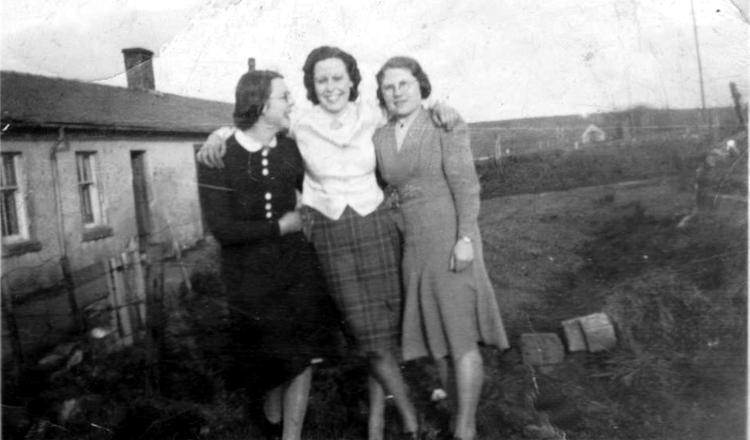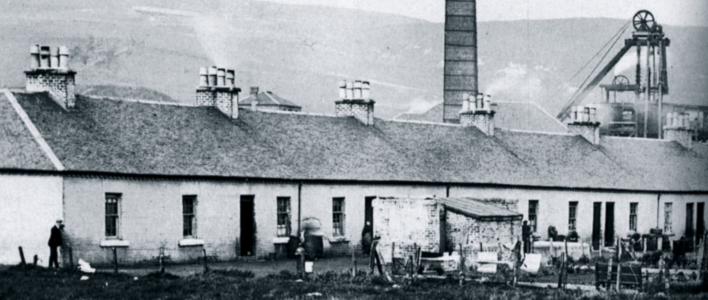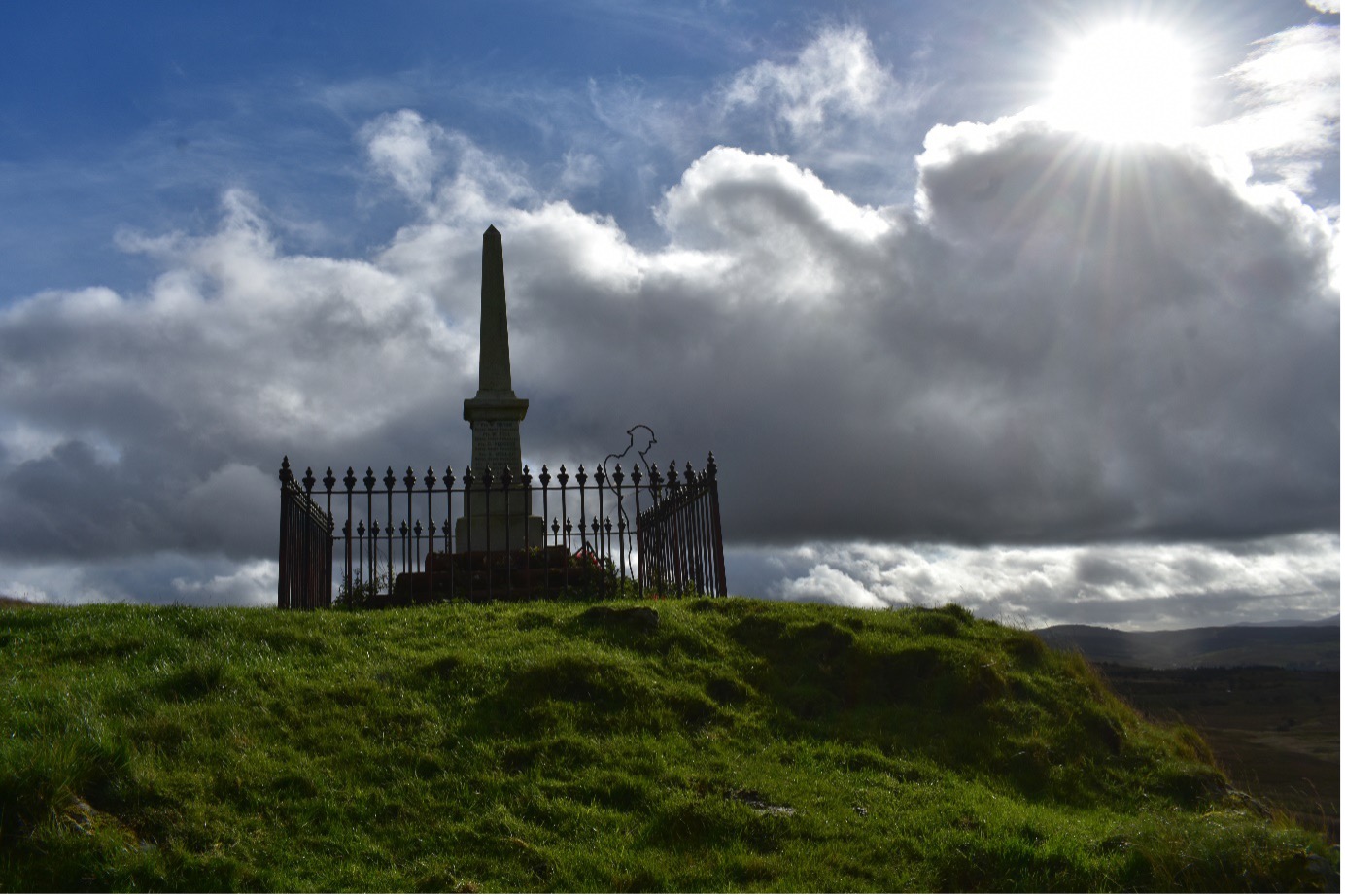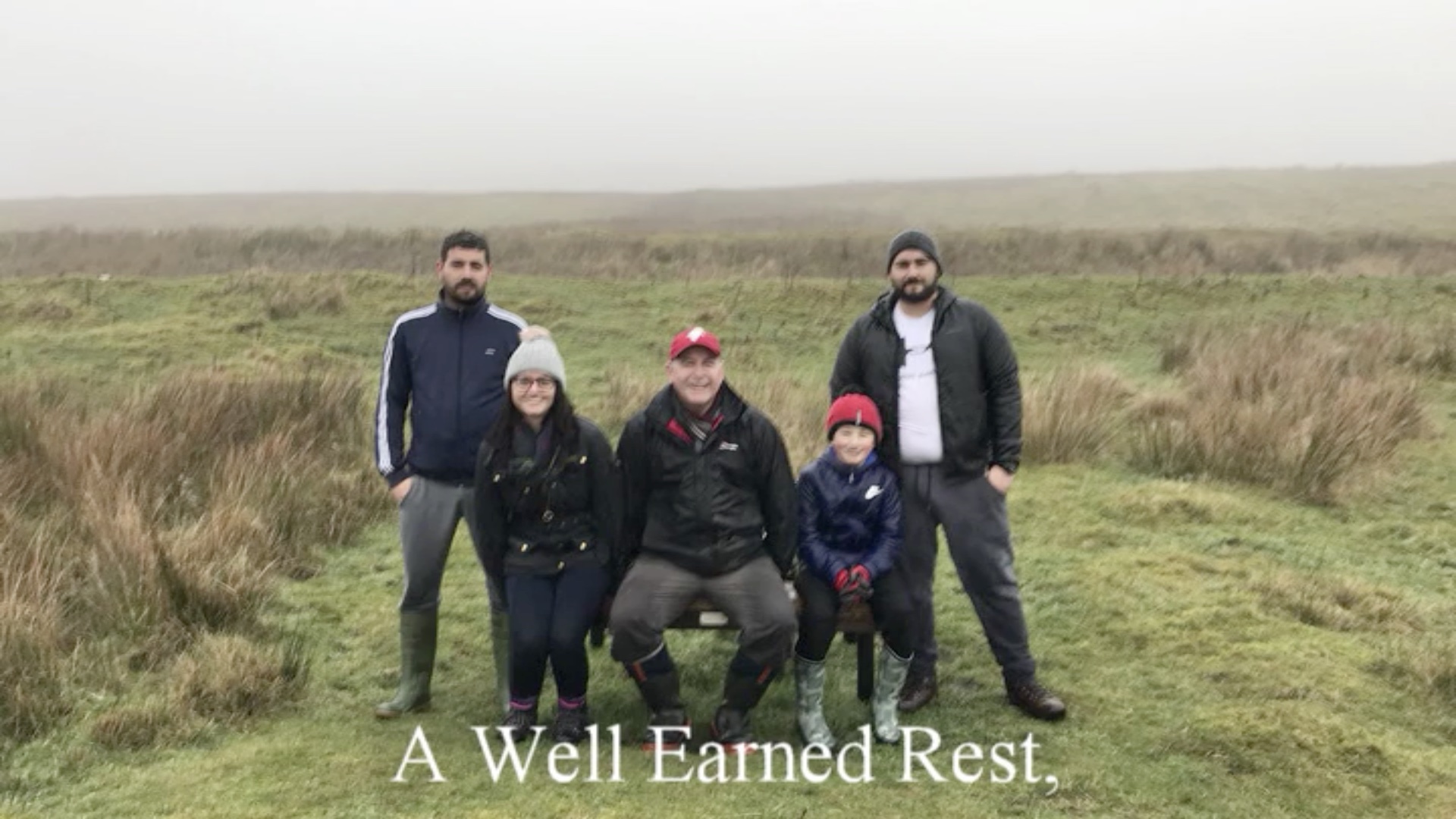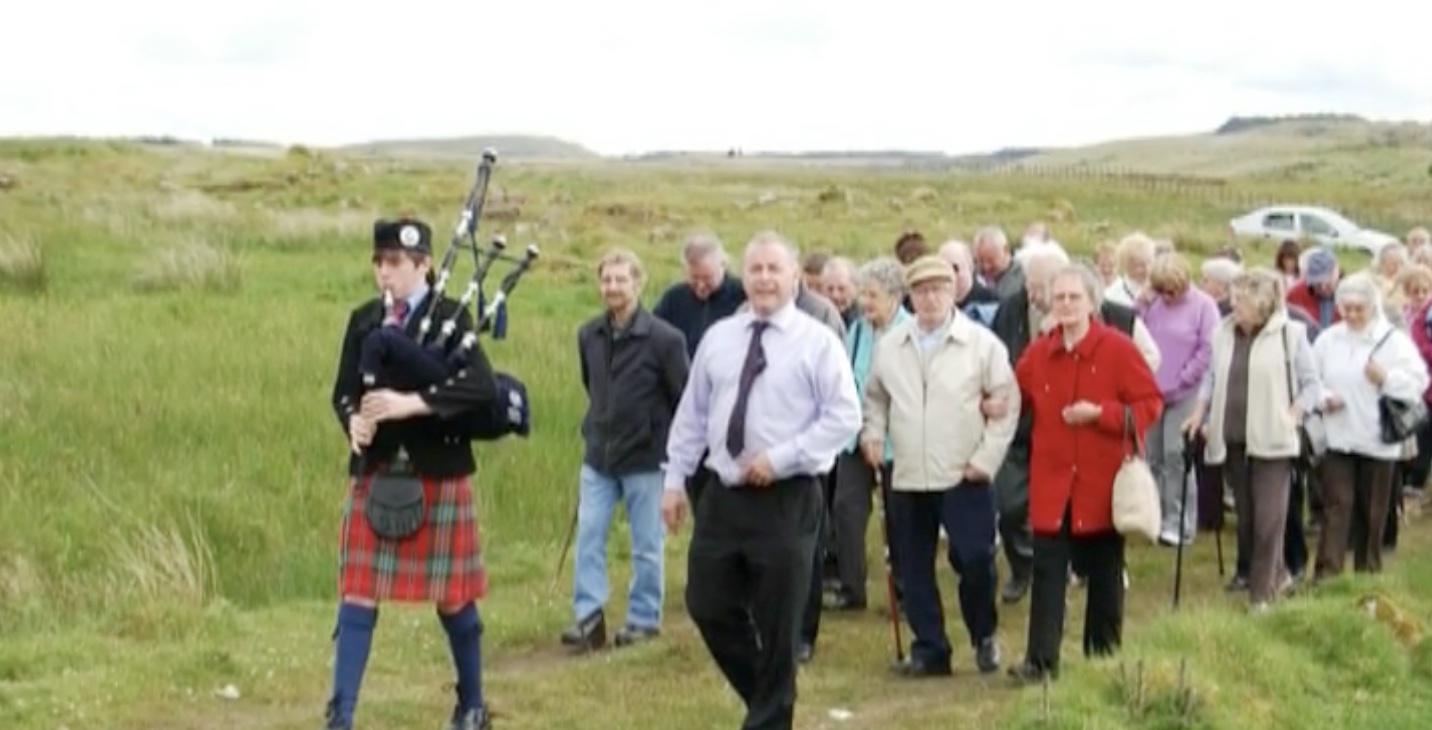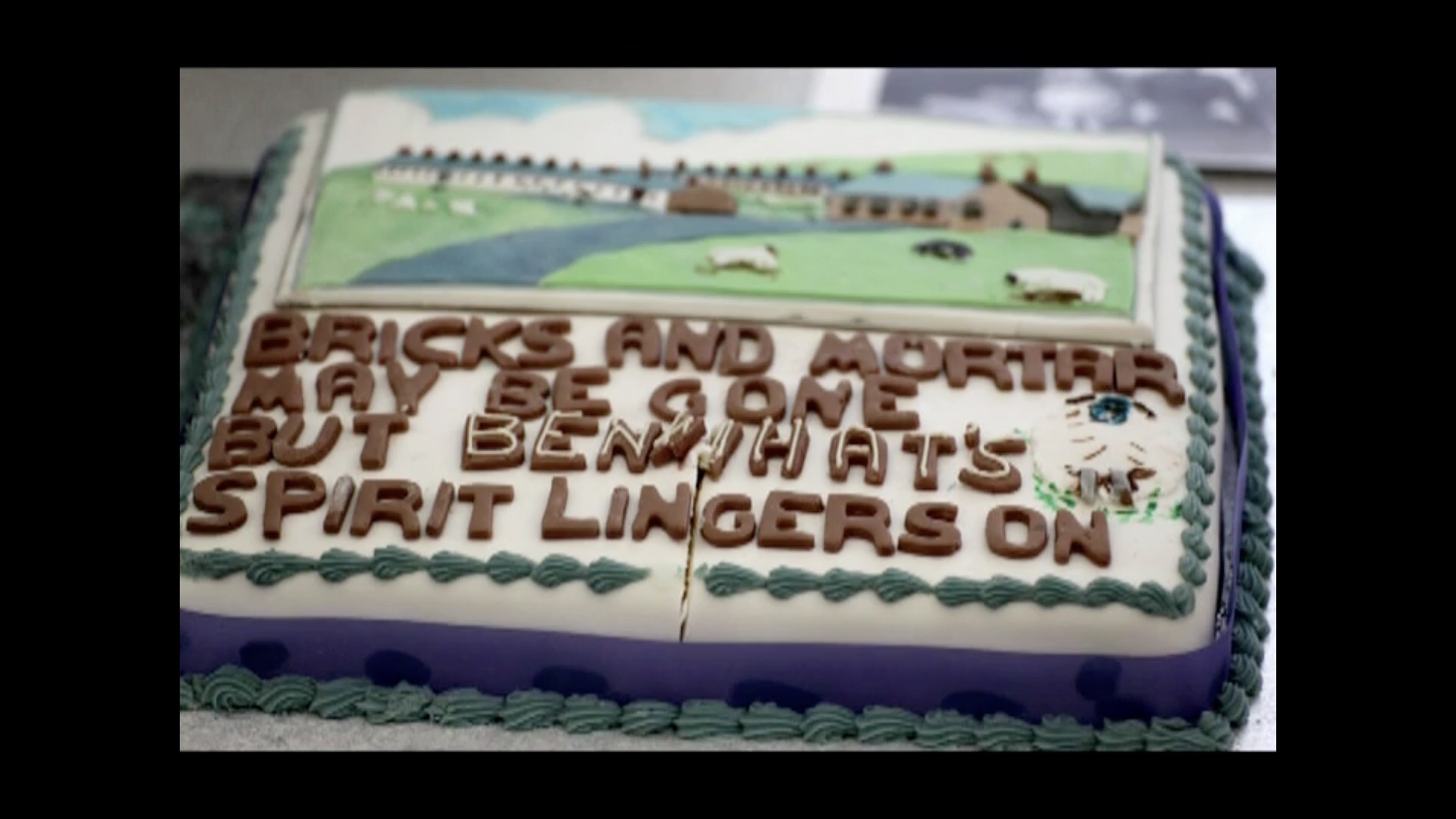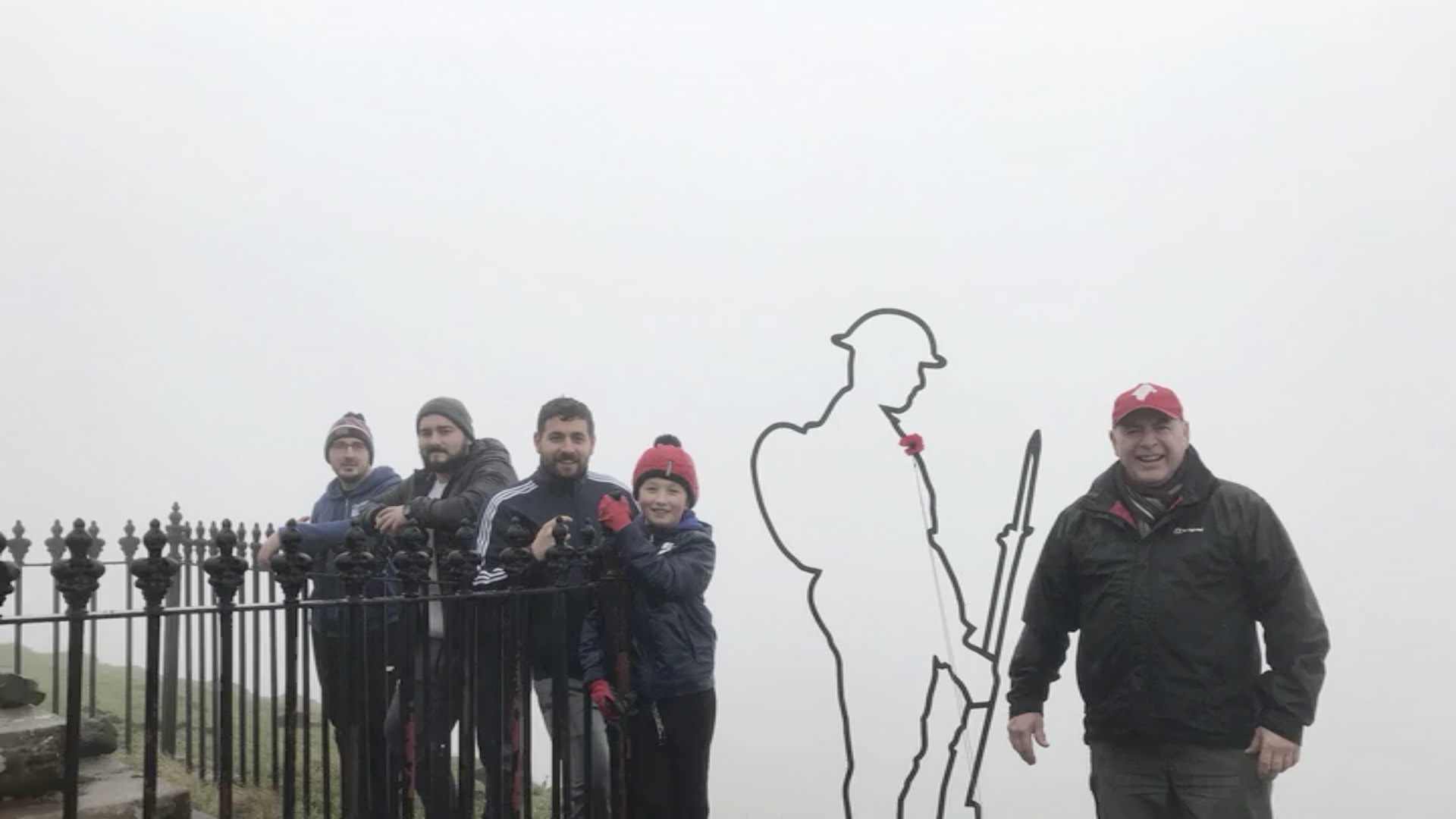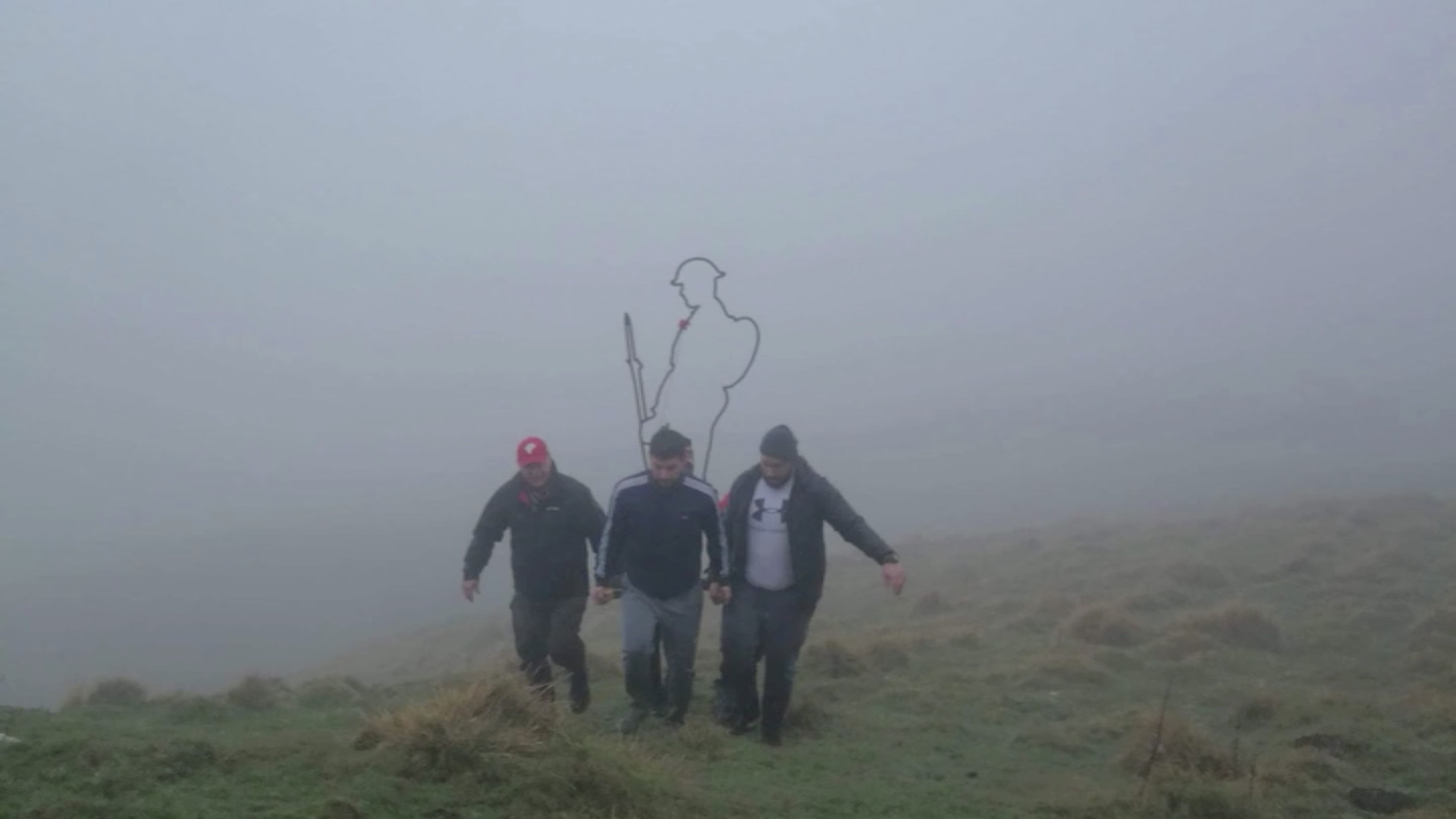With marking out the way for another academic year, the Lost Villages team visited the sites of Commondyke and Darnconner, just outside Auchinleck and Cumnock. Our guide was our volunteer Nanette McKee whose grandfather came from Commondyke and has family connections to other Lost Villages as well. Colin MacDonald from CCLP also came along to see what remains of these villages we have read and heard so much about.
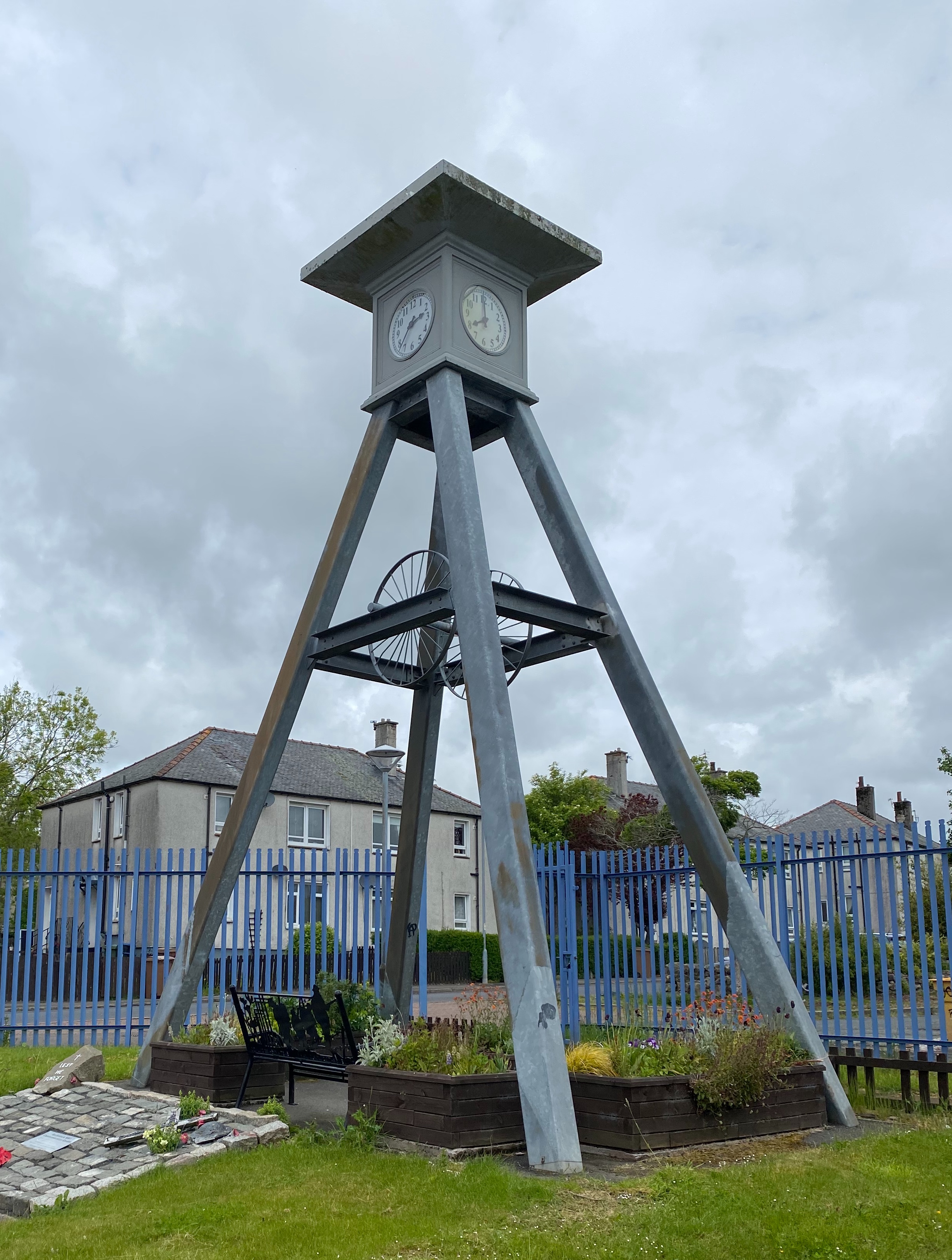
IMAGE: Memorial Clock at the Boswell Centre, Auchinleck. 2022
Our first stop was the Boswell Centre in Auchinleck, right next to the housing the villagers were moved to in the interwar period. Nanette’s grannies stayed just across the road and round the corner. As we entered the green of the Ayrshire countryside, we came to the Birnie, locally this is the name given to Commondyke by many who lived there. Birnieknowe was a religious community next to the Commondyke rows. Immediately the bings mark where the village once was. Now lush with grass, wild flowers and trees, they stand proud in the landscape a relic from a past that now lives on in people’s memories.
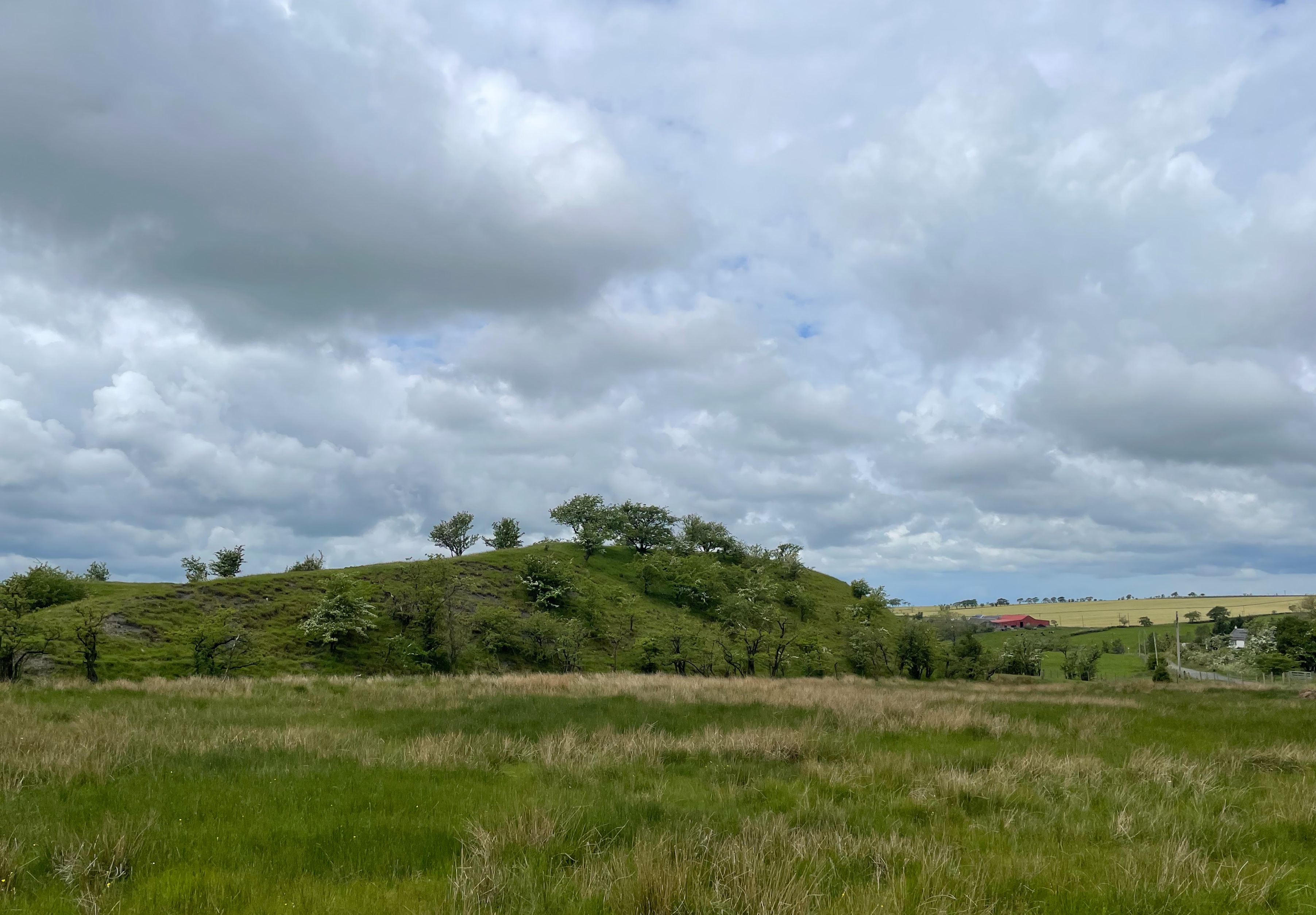
IMAGE: One of the bings at Commondyke. 2022
Here we can see the ticket office on the road up to the Bridge as it would have looked in the early twentieth century and below is the bridge today.
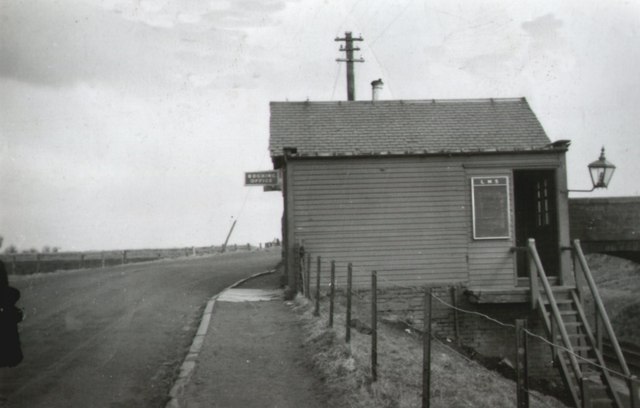
Commondyke Railway Station building. c. early 20th century. Image courtesy of Rab McMurdo
From the bridge, we could look down into the old railway cutting and see the station platforms
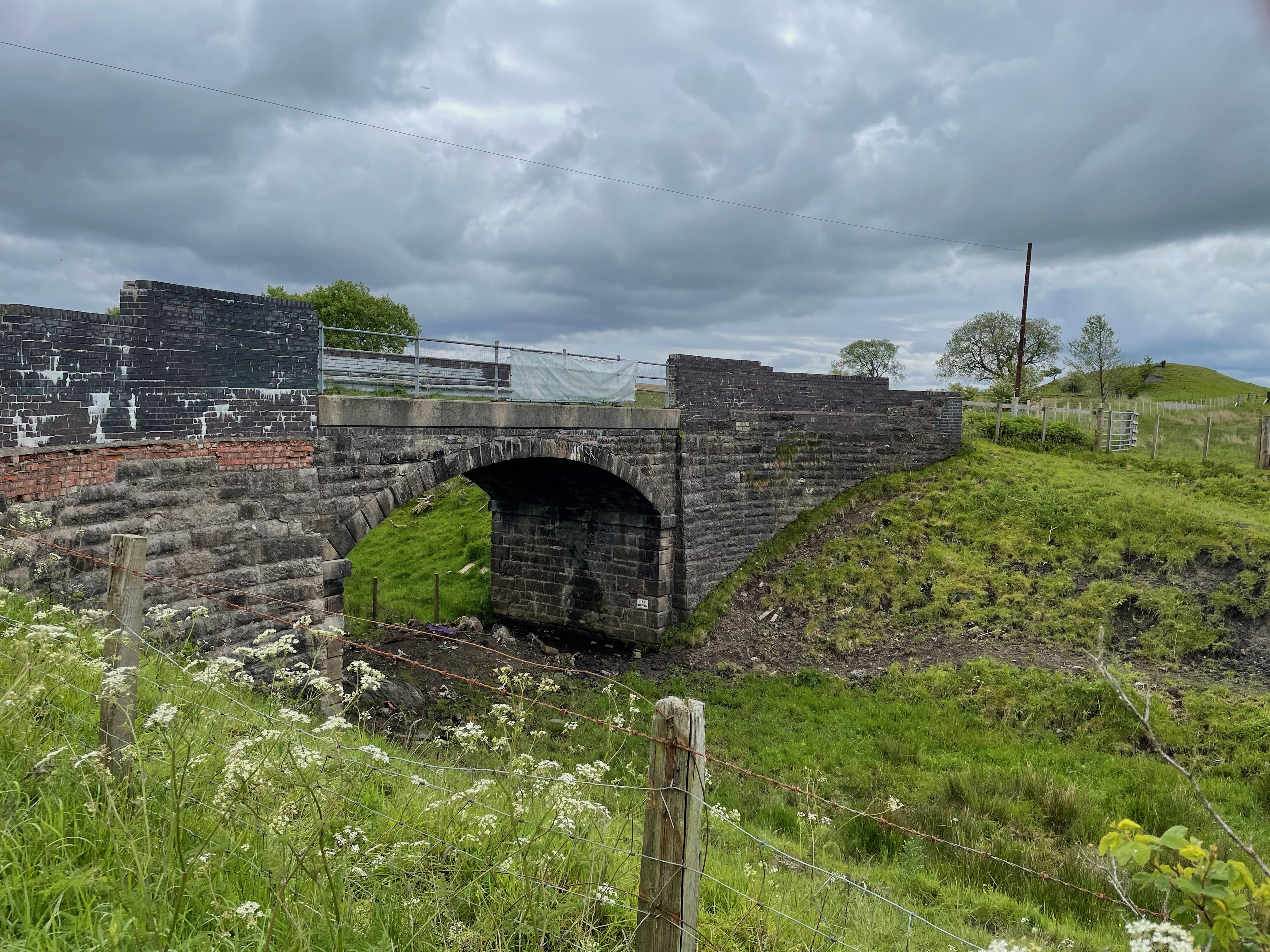
IMAGE: Commondyke Bridge, 2022
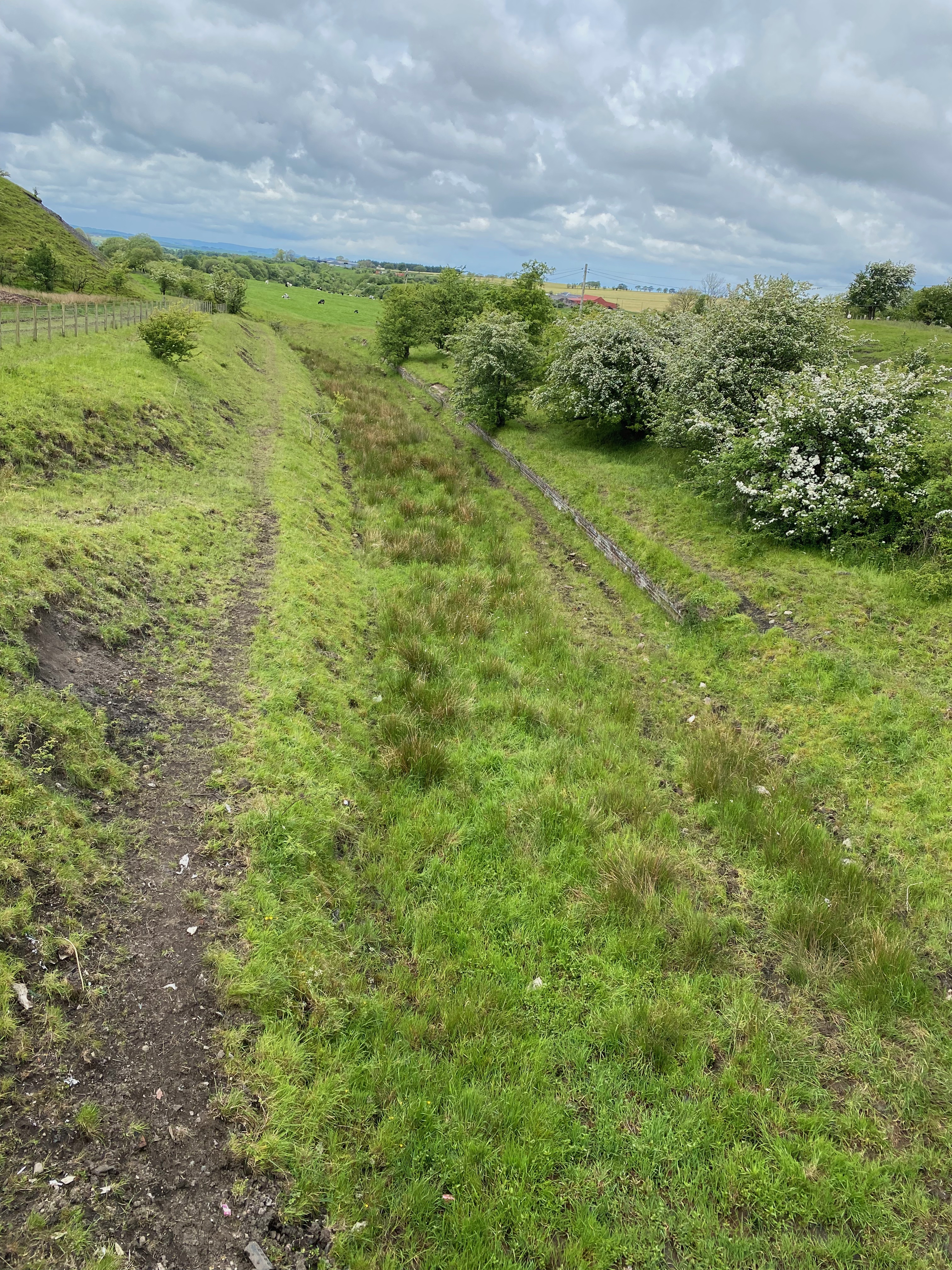
IMAGE: Muirkirk railway line with the bricks from the platform visible. Commondyke, 2022
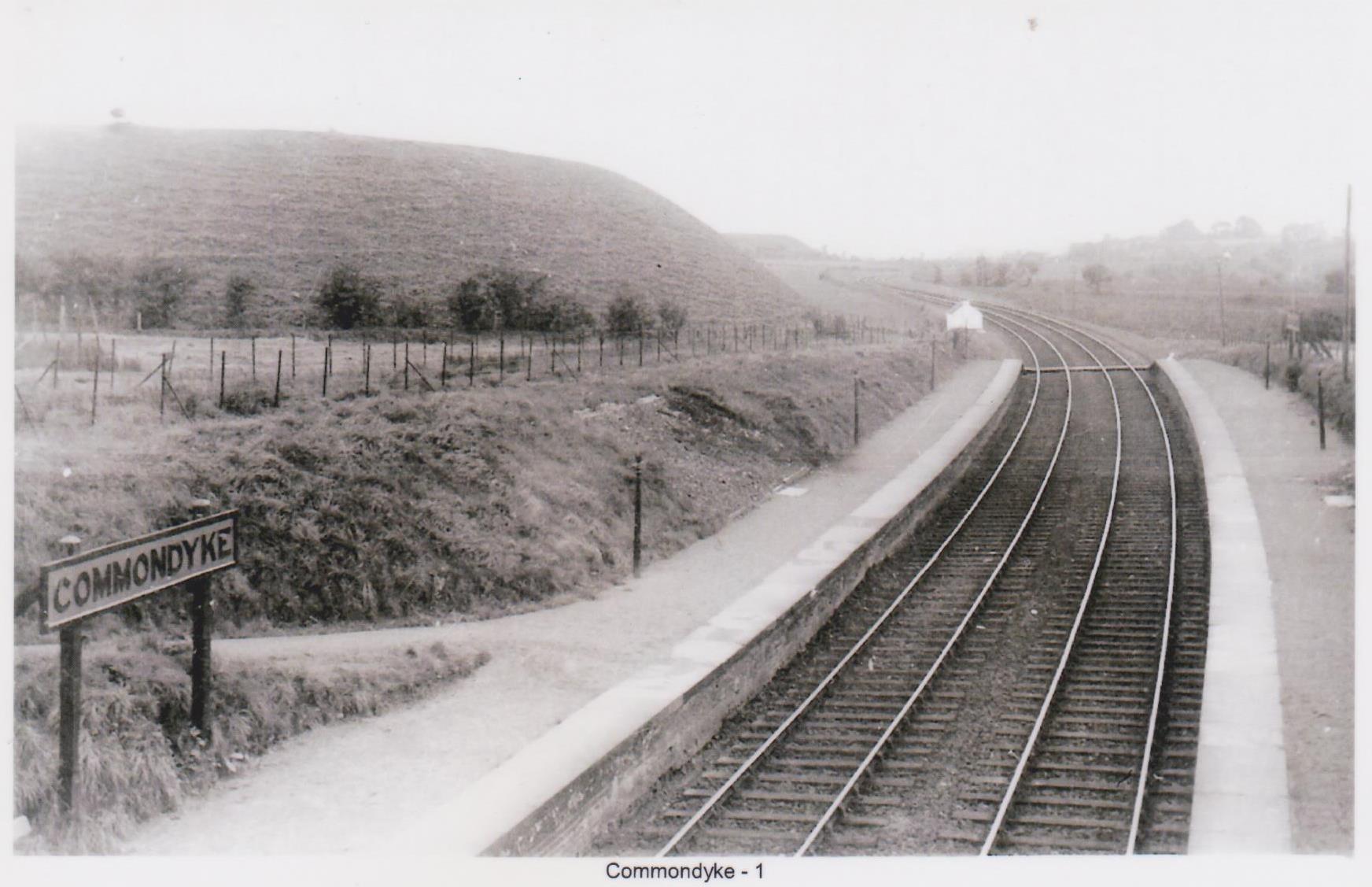
IMAGE: Commondyke Railway, c.early 20th century. Image courtesy of Rab McMurdo
As we walked up the row, we stopped where Nanette’s family, the Johnstone’s lived. She showed us a postcard sent from her Grandfather John to his mother during the First World War. It was emotional reading the postcard at the spot where it was received – imagining a mother receiving long awaited news from her son.

IMAGE: John Collins Johnstone, photographed before he left for war. With permission from Nanette McKee
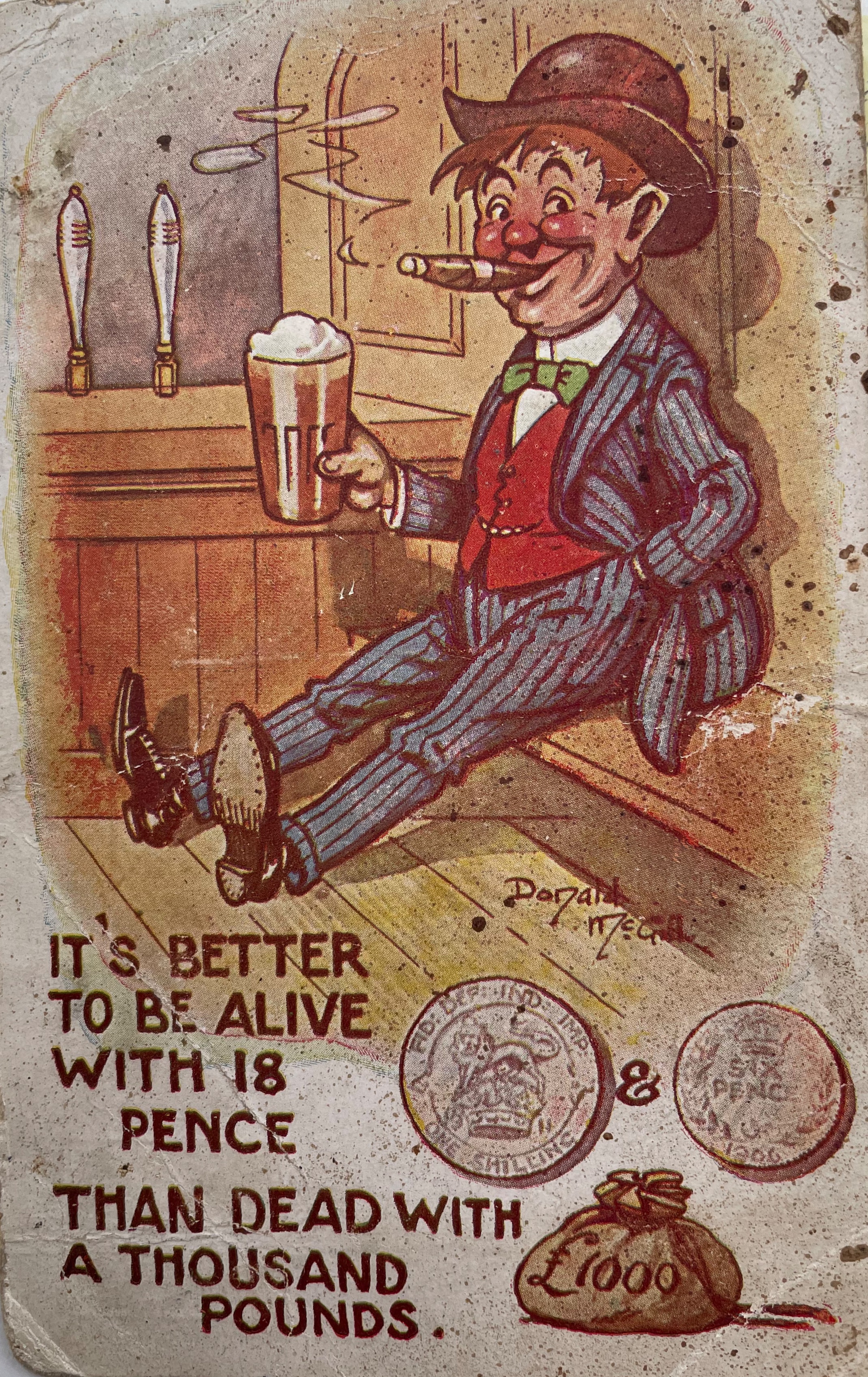
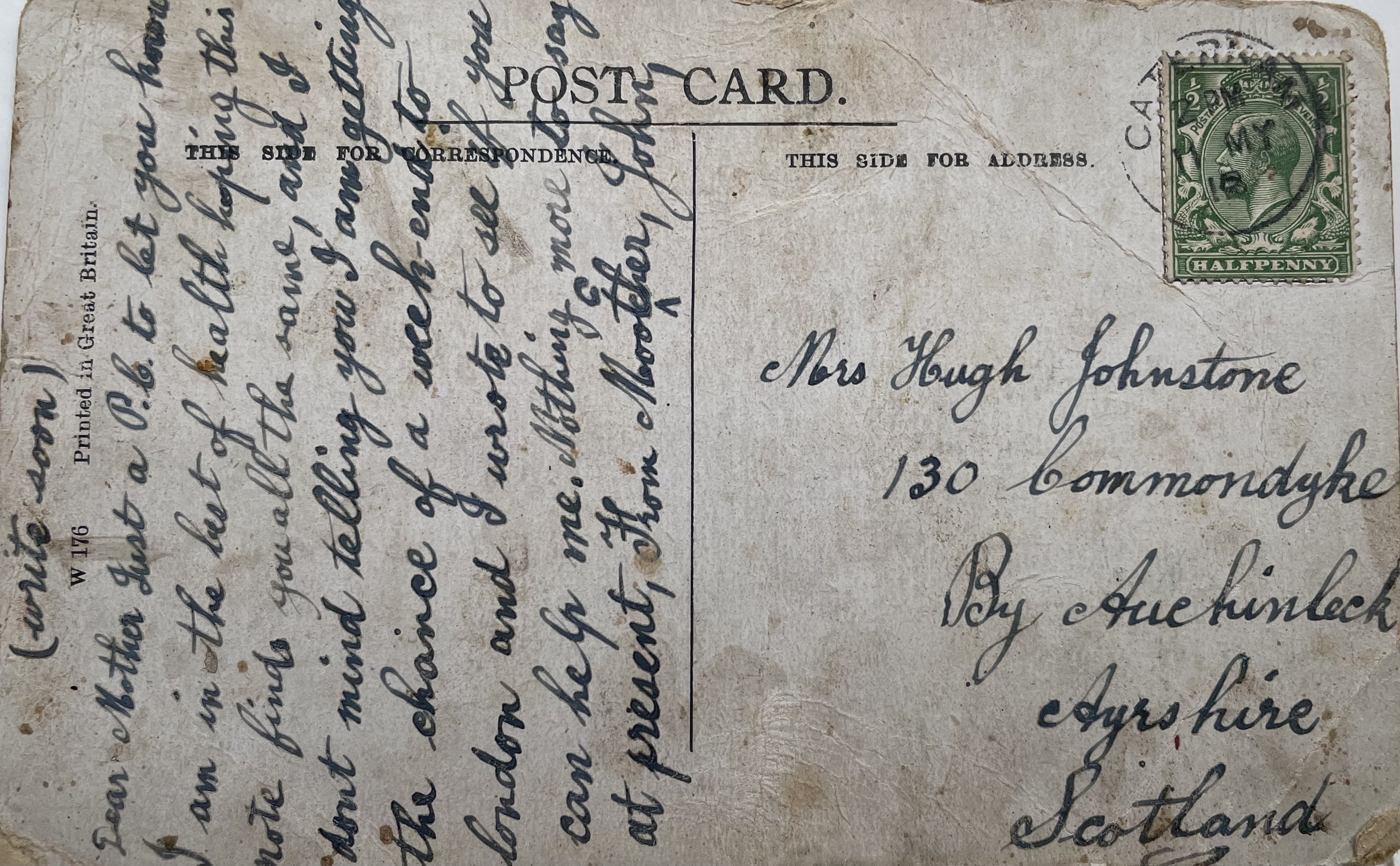
IMAGES: Front and back of postcard sent to Mrs Johnston of Commondyke from her son John, 1918. With permission from Nanette McKee
The first row past the religious community of Burnieknowe was picture from the bing below. After making friends with some curious sheep, we walked along the row in the middle of the houses photographed below, their footprint just visible through the grass. As with other villages, the houses have long gone but the outhouses seems to weather the tests of time. Our researcher, Yvonne was delighted to see what appeared to be the remains of the washhouses/outbuildings were the best preserved. If you remember these, please get in touch to tell us more.
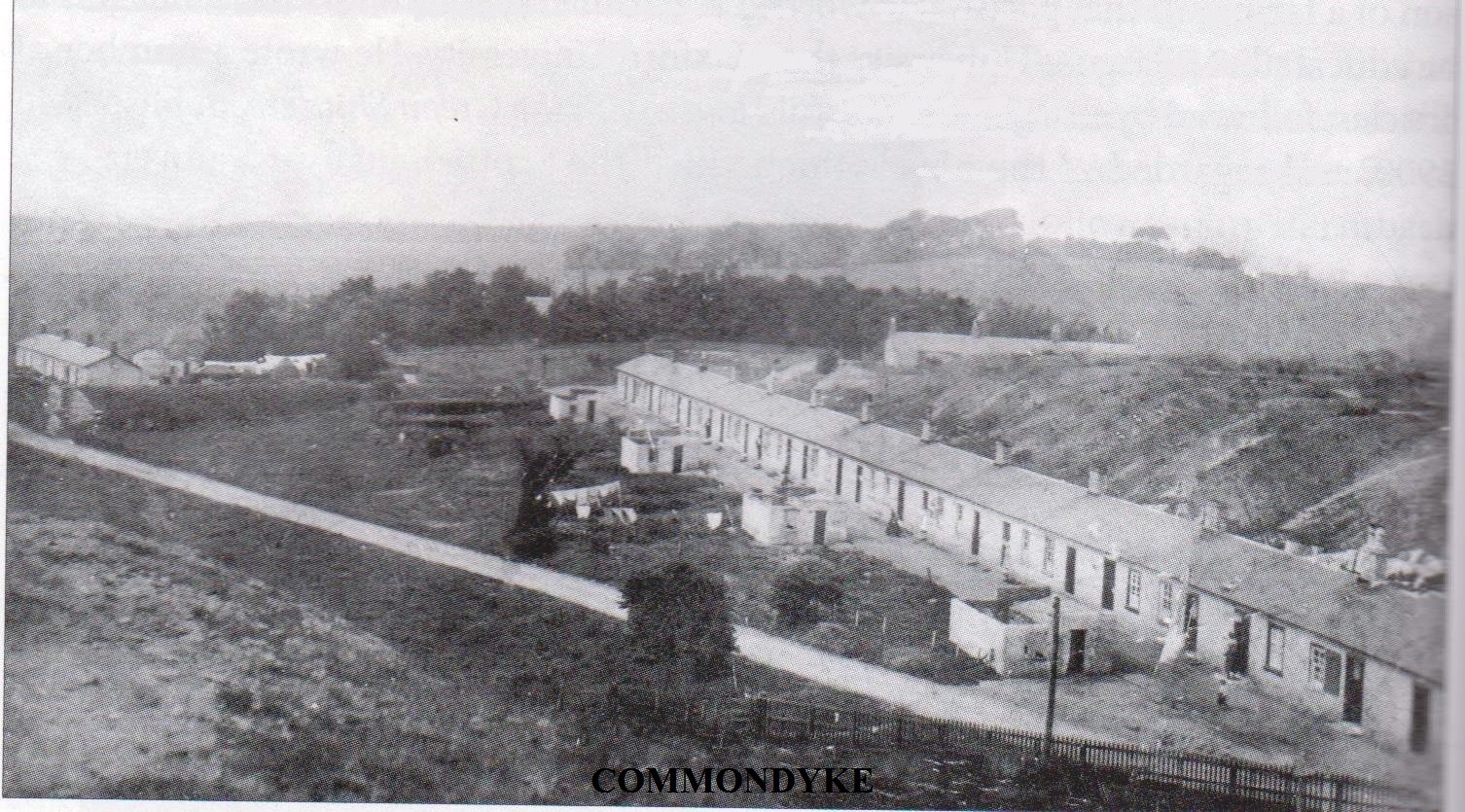
IMAGE: Postcard of Commondyke. Date unknown.
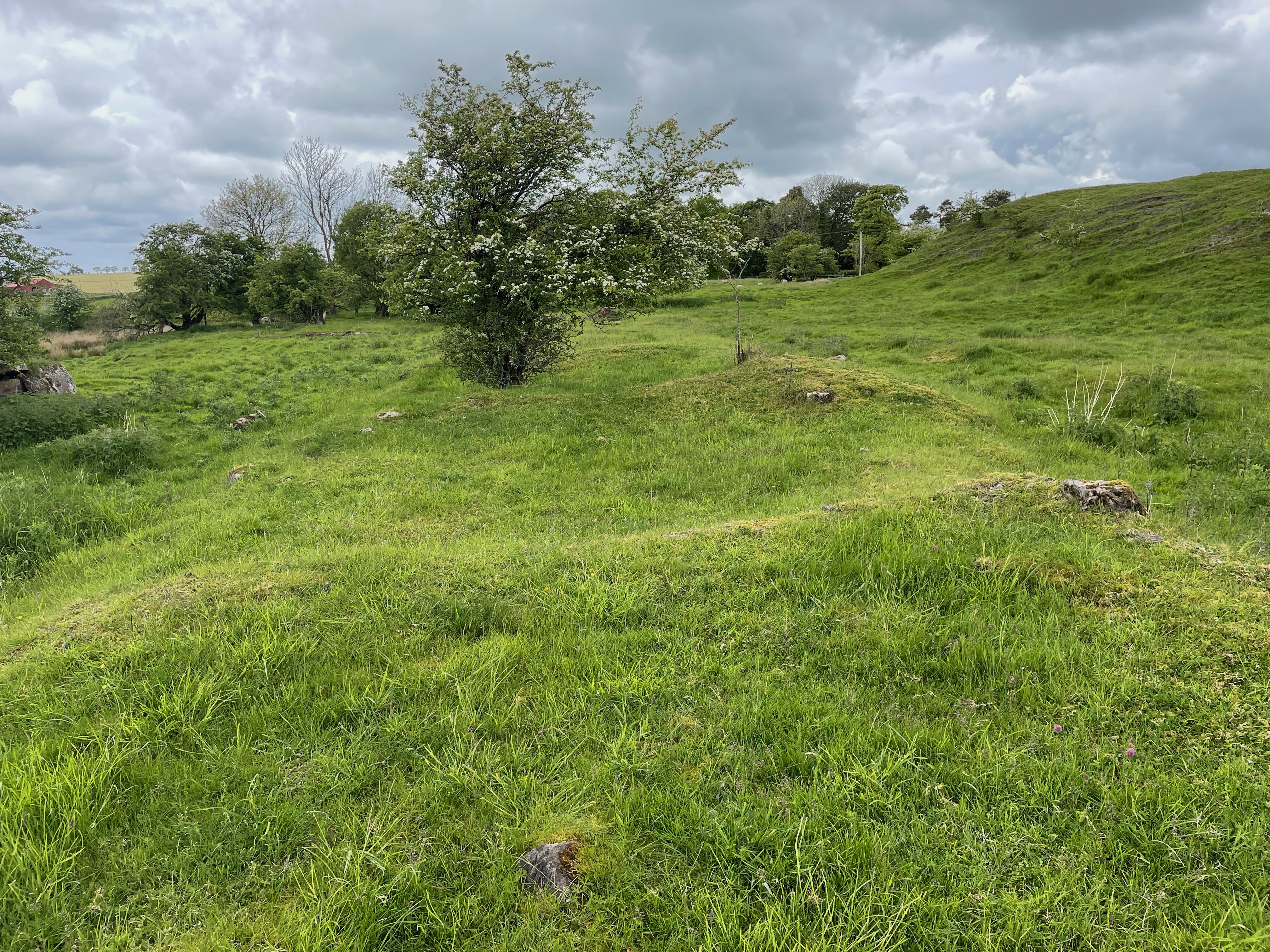
IMAGE: Standing in the rows at Commondyke
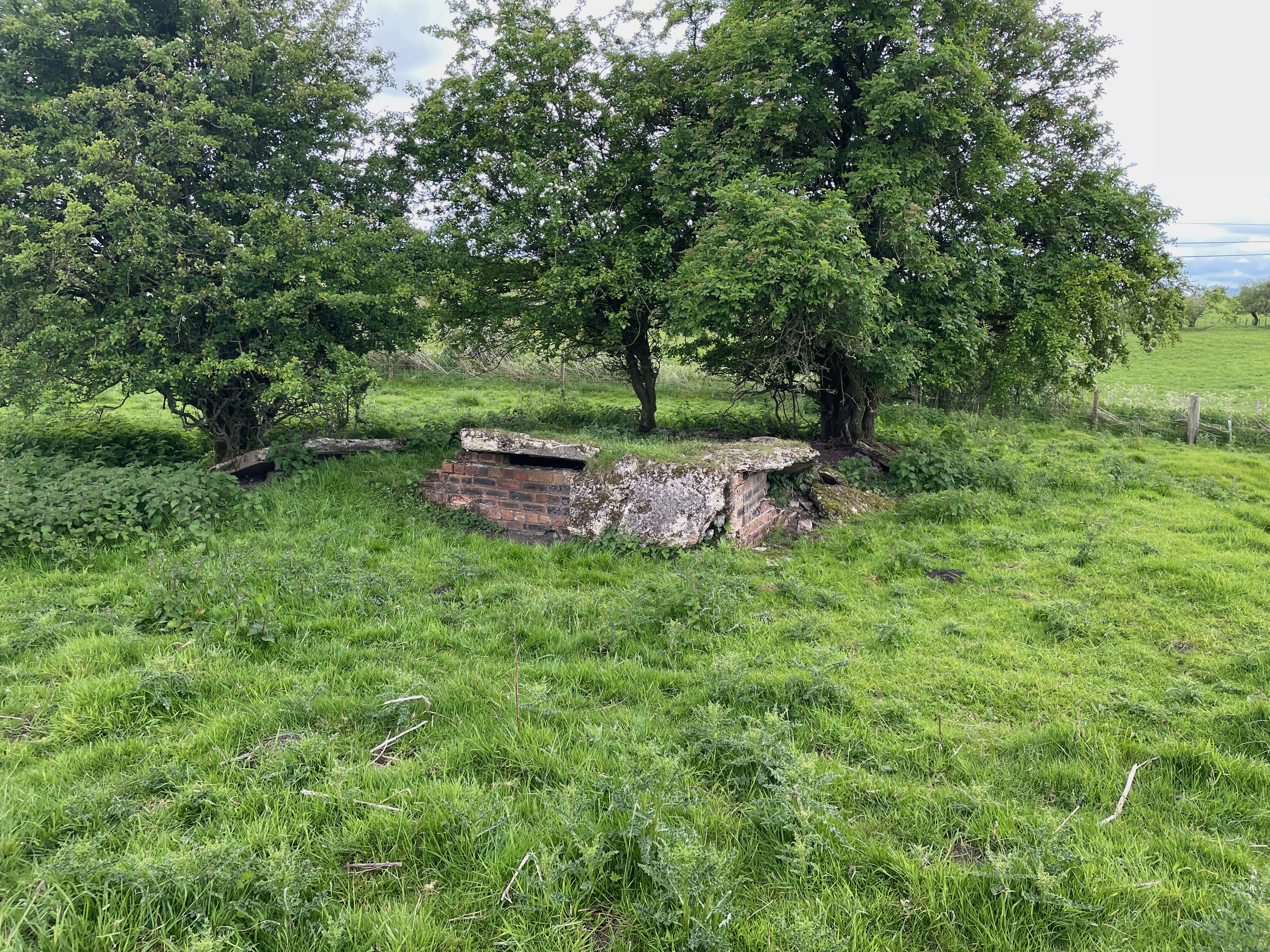
IMAGE: Remains of the washhouse, Commondyke, 2022
On the peaceful and fragrant May morning, it was hard to imagine the all the people and bustle of a mining community in the now silent landscape.
As we made our way to Darnconner, we passed Ballochmyle, Common and Walker Rows which were virtually impossible to make out. From the satellite image from google maps you can see, the open cast mining reservoir of the Common Pit has blasted away pit workings. To the right, the Quarry removed most of the Common Loch Row, the longest row in Ayrshire at ninety-nine houses.
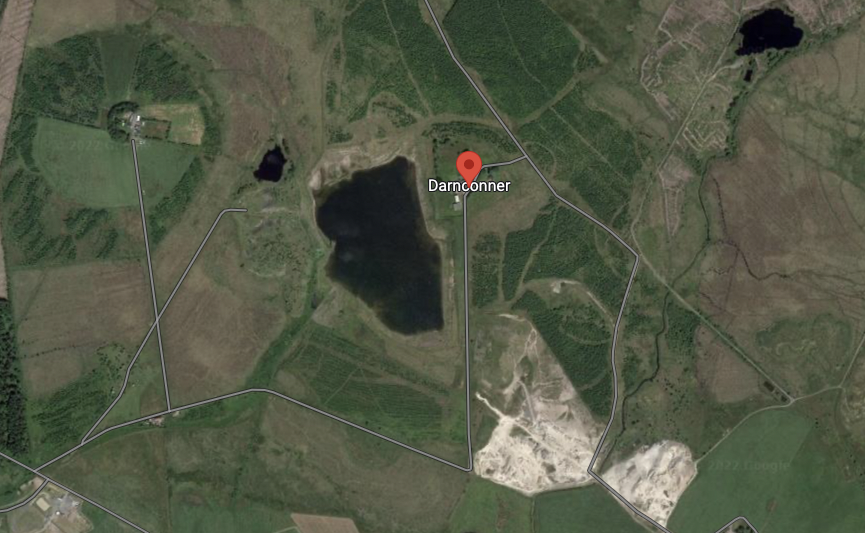
Maps courtesy of Google Maps, map data 2022
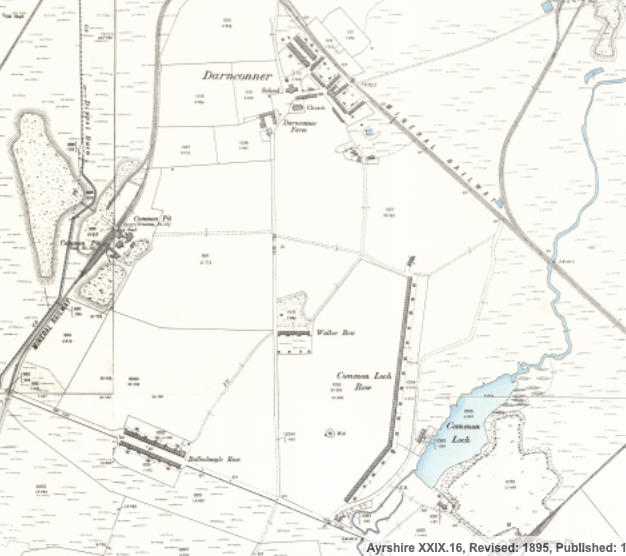
IMAGE: OS Map 25 inch, 1892-1949, Permission of NLS
At Darnconner farm, the village Darconner school, a fine red sandstone building, now a domestic home, is all that truly remains of the village. John Johnstone, the young soldier who wrote to his mother during the war in 1918 went to school at Darnconner. We couldn’t make out any lines or bumps in the grass to indicate there once was thriving mining community of around 500 people and at its peak over 1,000.
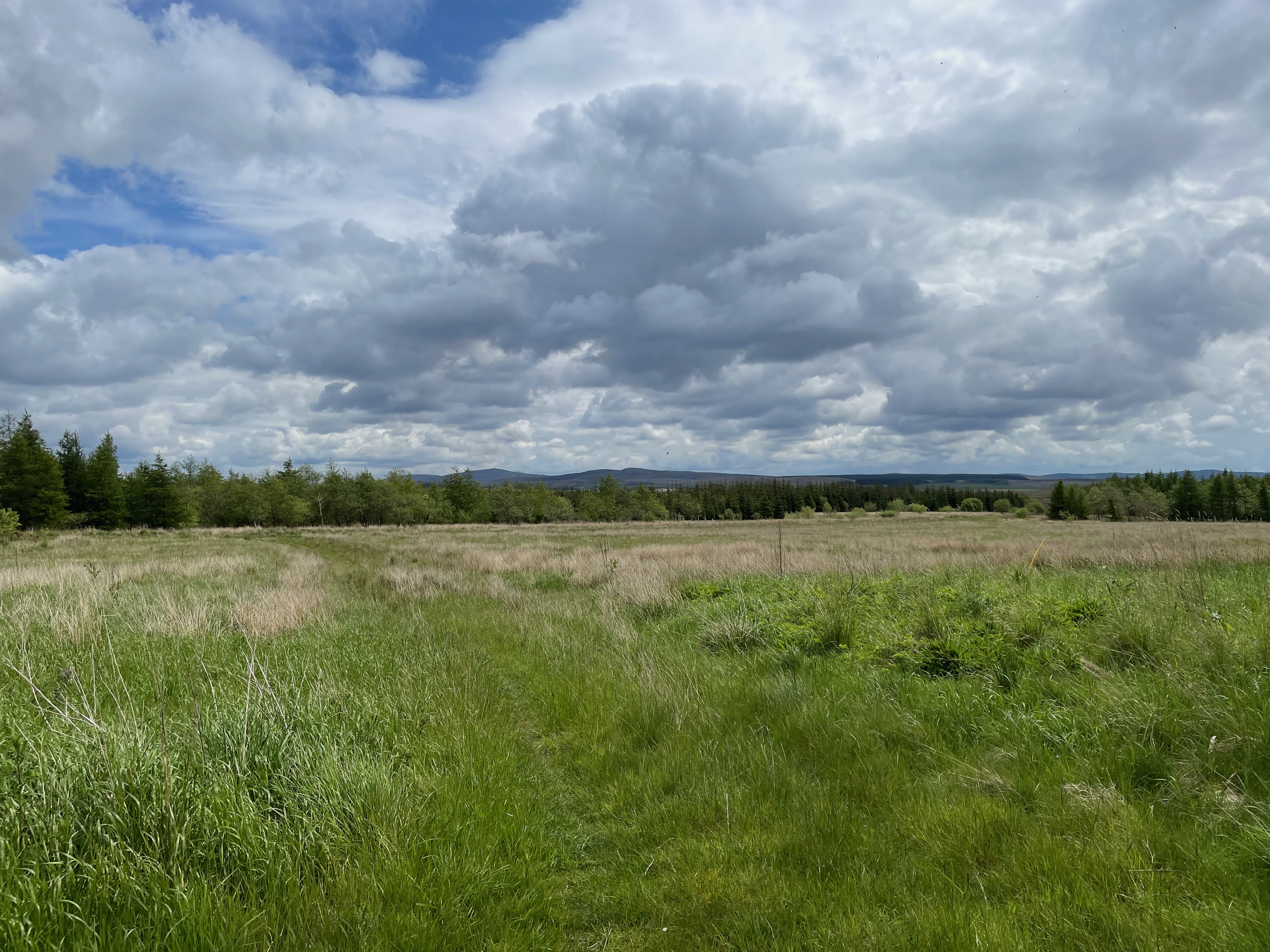
IMAGE: Site of Darnconner, 2022. Image: Lost Villages of East Ayrshire collection
We headed back, disappointed to not find more of Darnconner but delighted to the school building still there as a fixture of the village that once stood on this site. Perhaps not entirely unexpected given the village was largely empty by the the First World War.
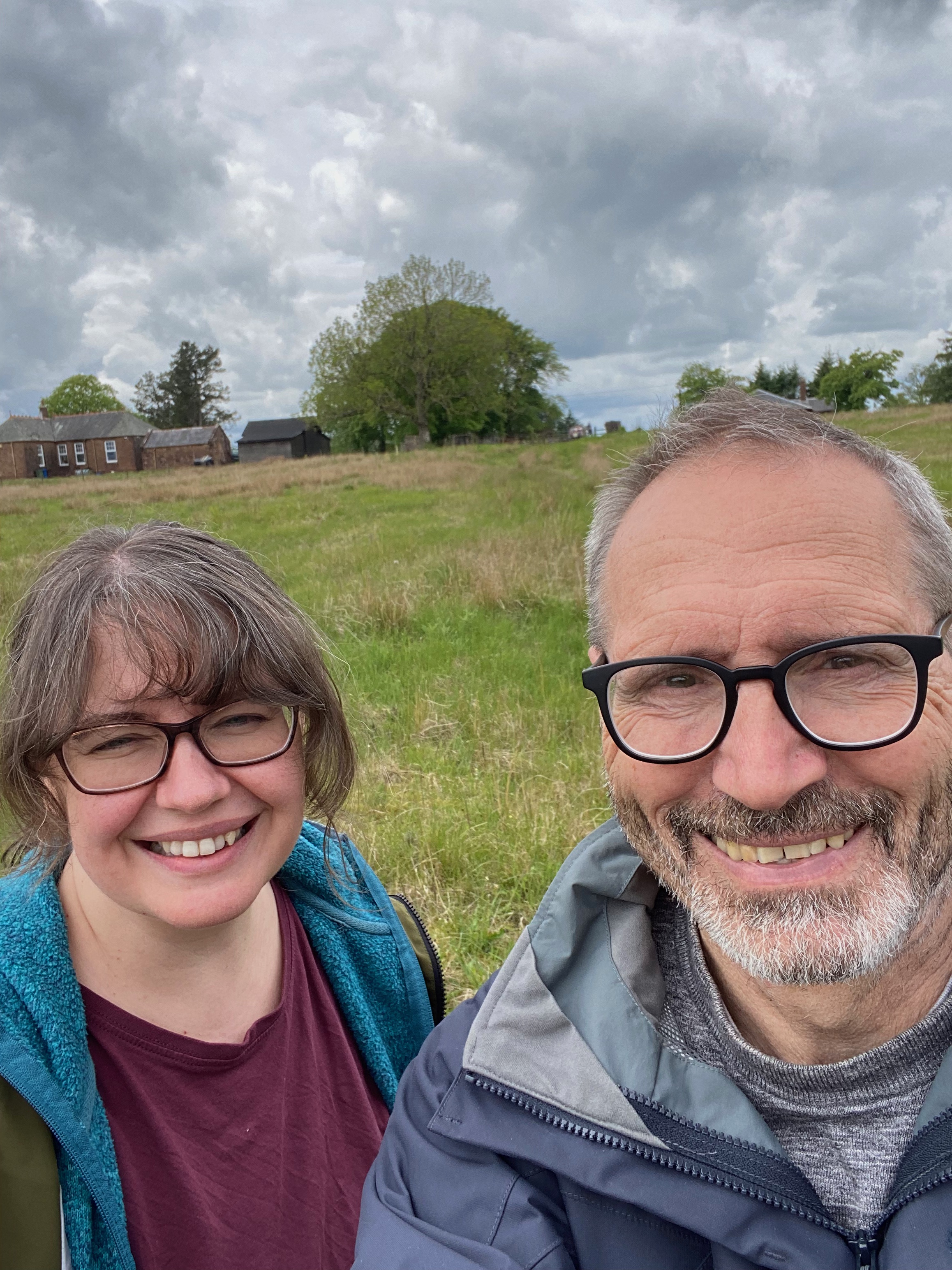
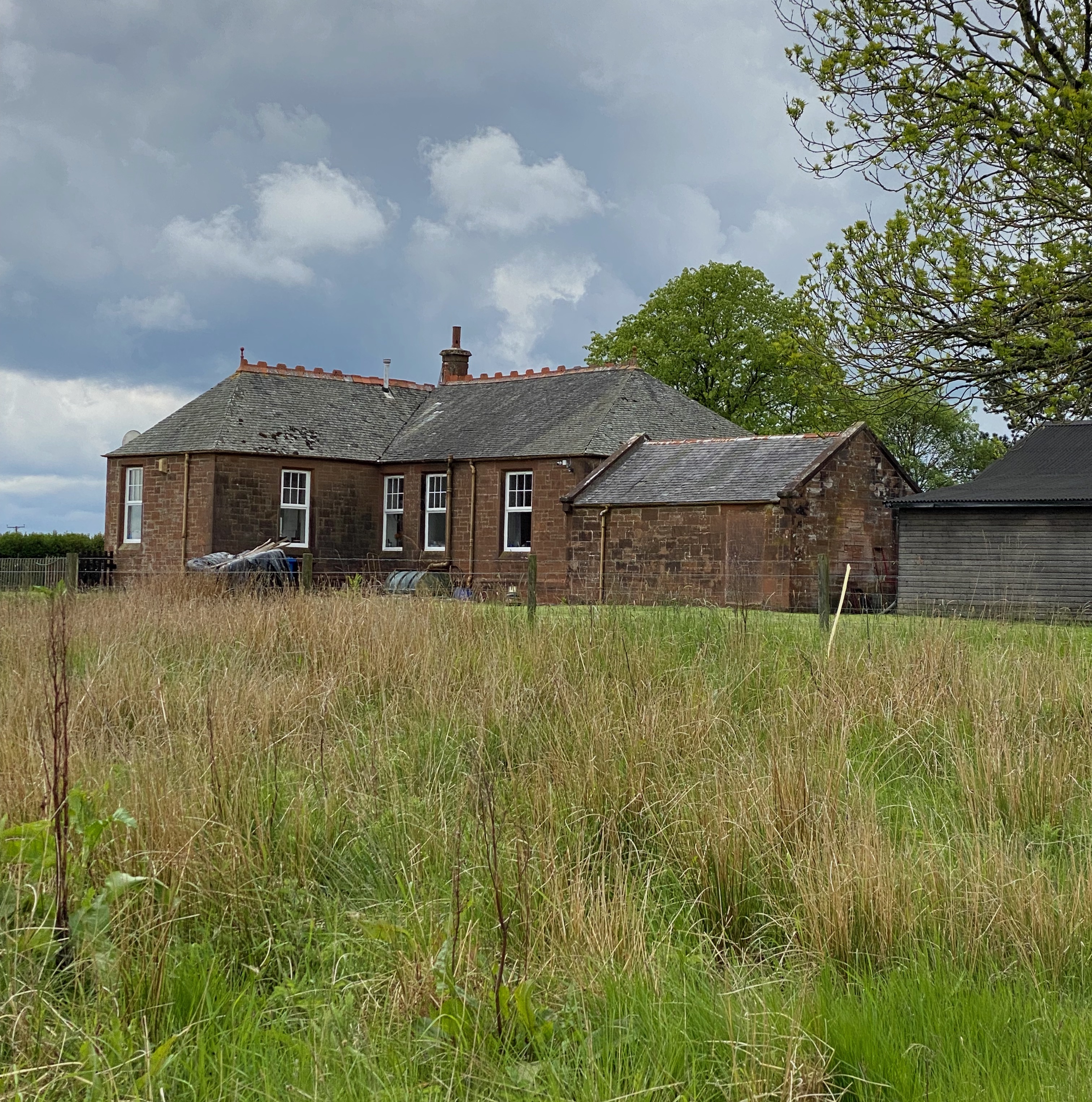
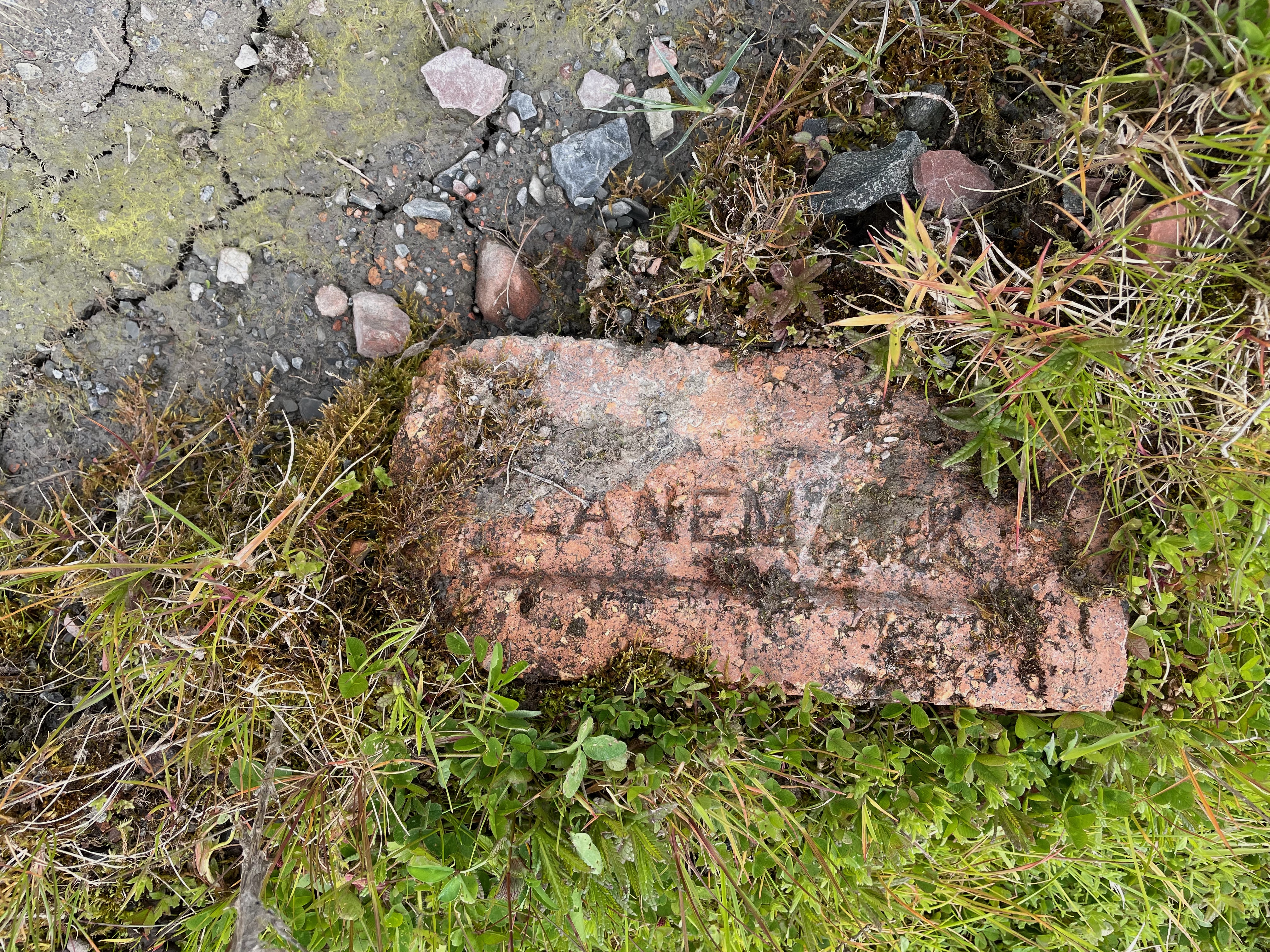
Our final stop of the day was the High House pit and remaining row in Auchinleck. The bing and the wheel workings at the end of the industrial estate in the middle of the town are striking remains of a once burgeoning industry in this area.
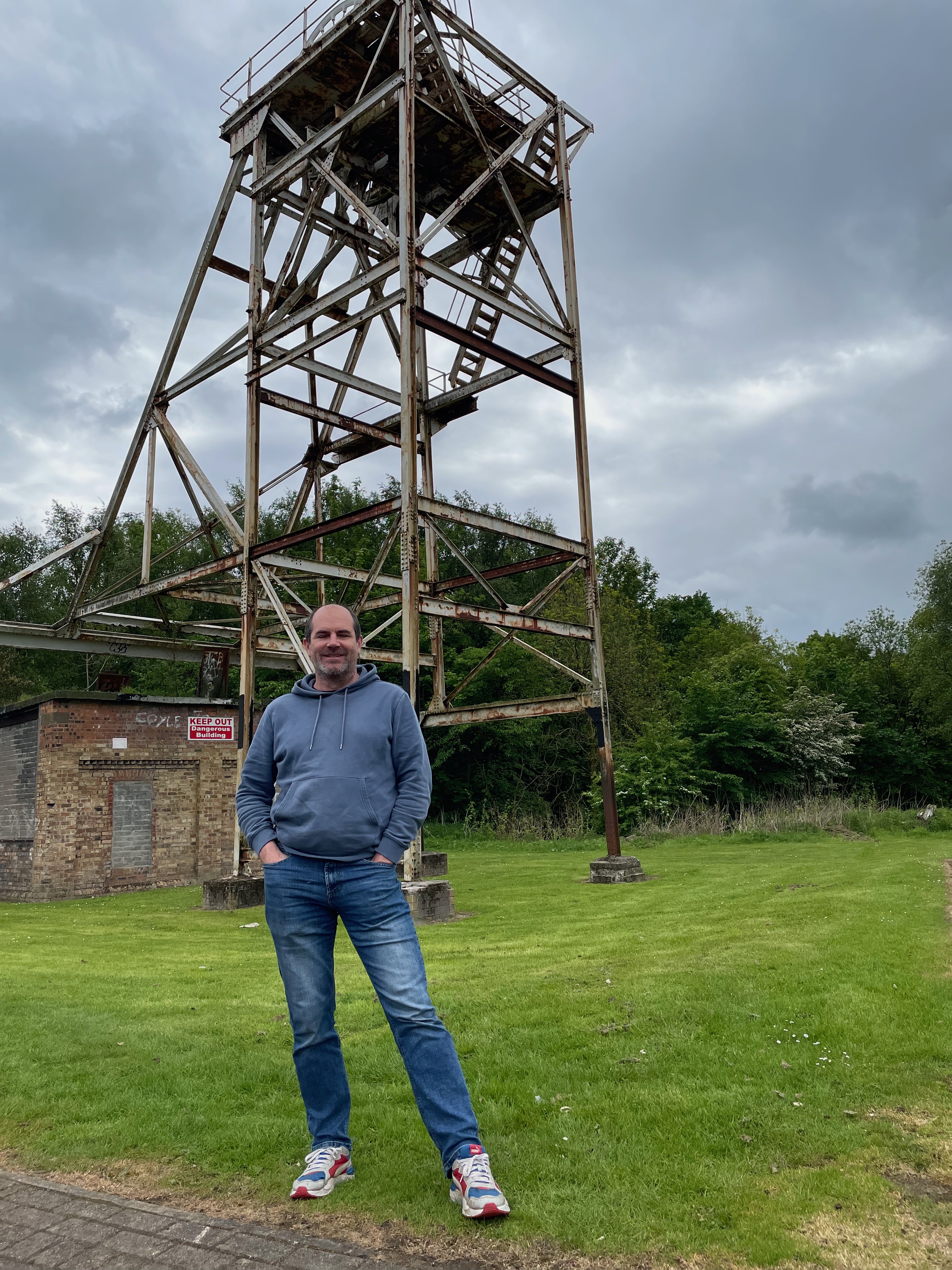
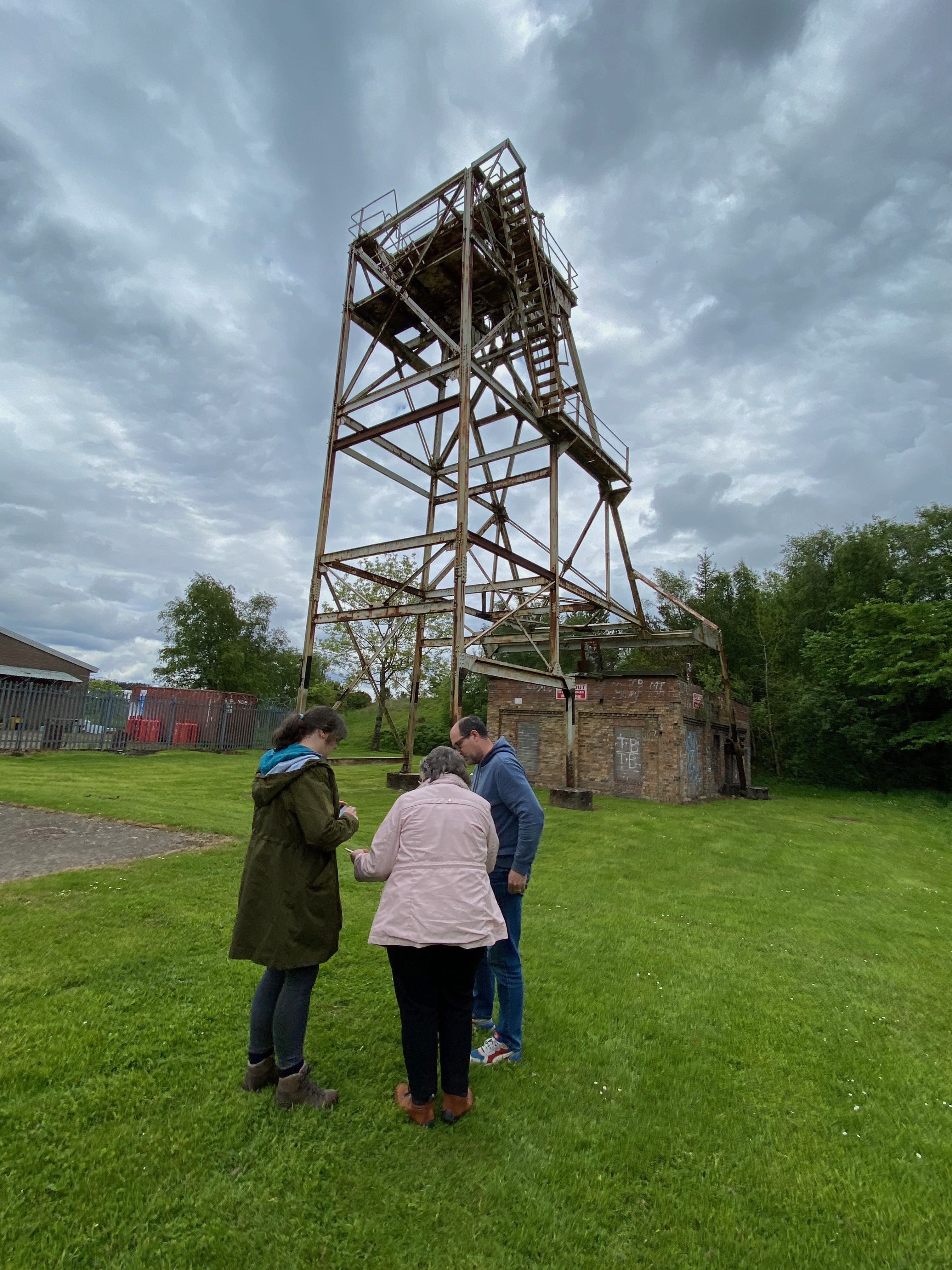
The Highhouse row is now an industrial estate, it was great to see these houses repurposed for the twenty-first century with local businesses operating out of them.
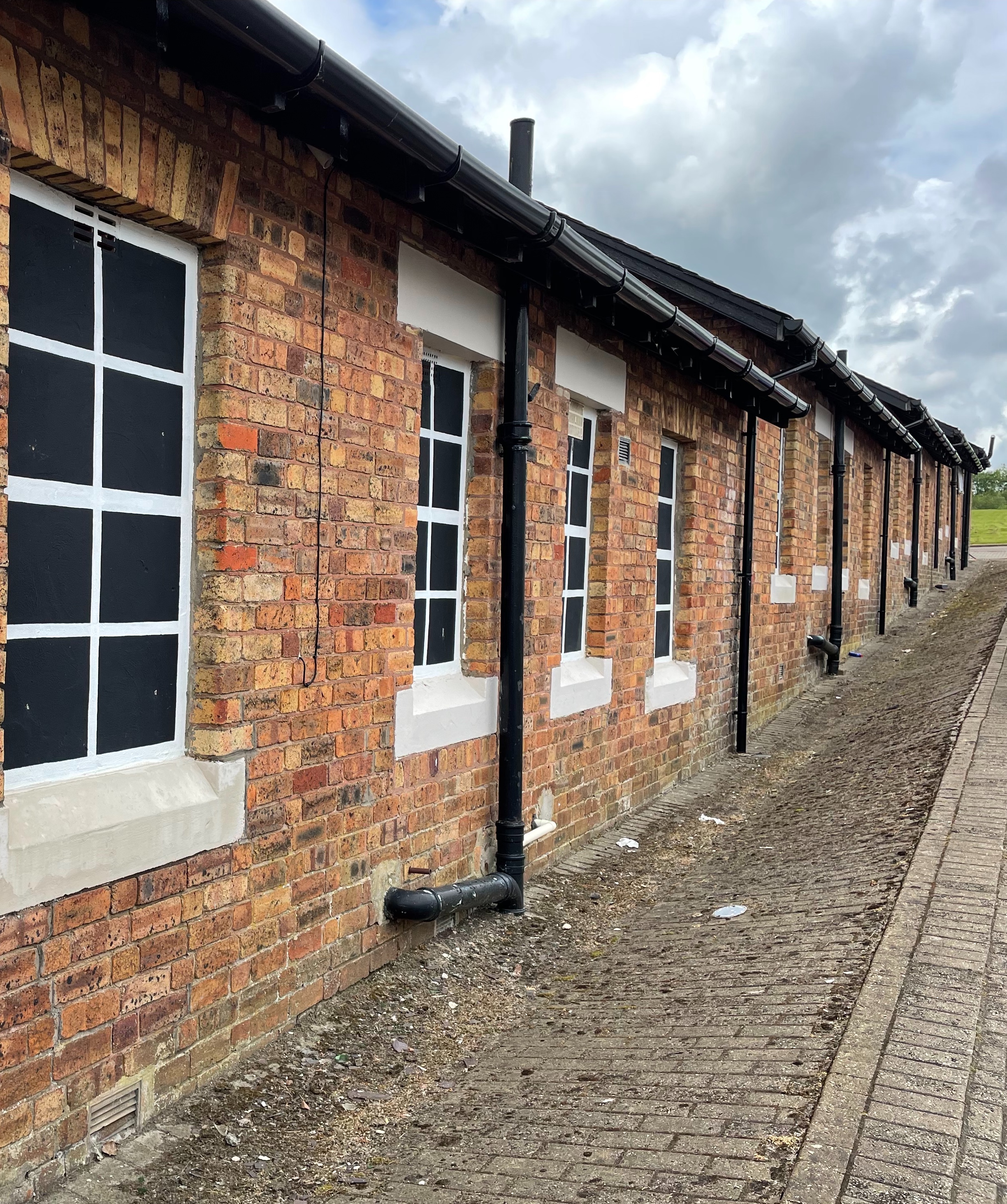
IMAGE: Remaining Highhouse Rows, 2022
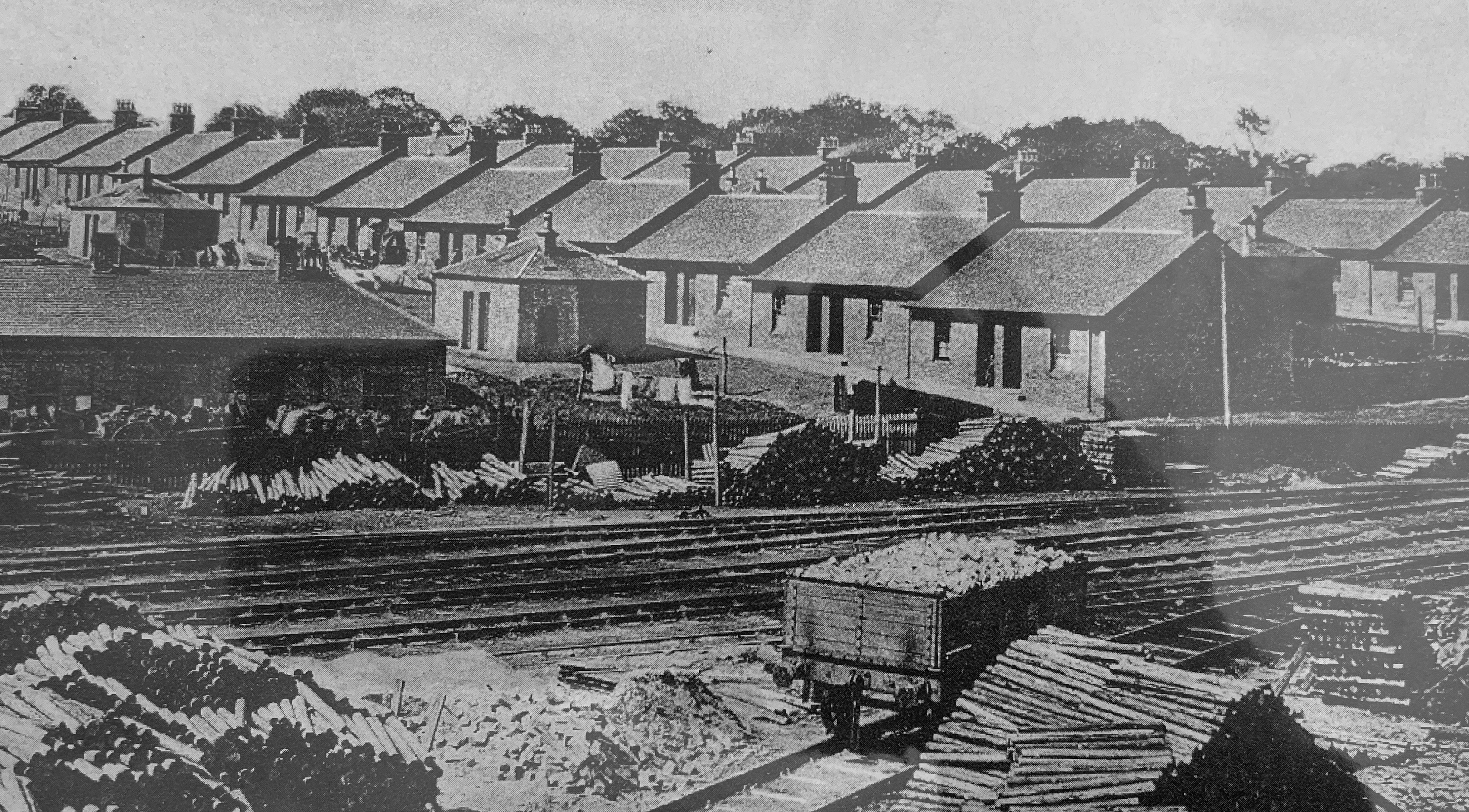
IMAGE: Highhouse Rows and railway track. Date unknown. Source: unknown.
It was good to get a sense of the area around Commondyke and Darnconner to understand their connection to the landscape and relationship to each other and the clusters of rows around this area just outside of Auchinleck. Little remained of Darnconner, though similar to Lethanhill the school house has been preserved. At Commondyke the new buildings on the Birnieknowe religious community site and the bridge and railway cuttings meant the village as whole was easier to understand, with the aid of the wonderful georeferenced maps from the National Library of Scotland.
We are still collecting stories about Commondyke and Darnconner, if you lived there, or your family did, please get in touch and share your story with us.
